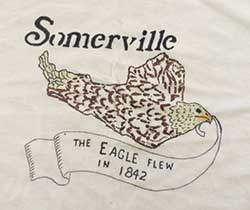
Eagle Feathers #238 – The Great Fires
By Bob (Monty) Doherty
Reprinted from the October 1, 2014 issue of The Somerville Times.
Next week is Fire Prevention Week. Its annual observance is the week in which October 9th falls and has been celebrated at this time since 1922. The reason for this date is the remembrance of a conflagration, the Great Chicago Fire of October 8 and 9, 1871.
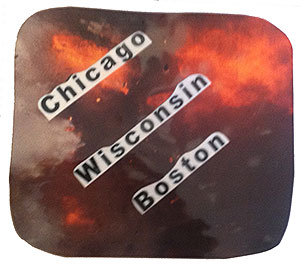
It was the worst fire in American history until September 11, 2001. Killing over 250 people, this fire destroyed over 17,000 structures and burned over 200 acres. Amazingly and coincidentally, on the same day, the most devastating forest fire in American history was raging in Wisconsin. Because of the losses of the internationally popular city of Chicago, the Peshtigo, Wisconsin fire was forgotten, despite the fact that it took over 1,200 lives, five towns and 1.2 million acres.
1871 was such a fire wake-up call across America, you would think it would never be repeated, but you would be wrong. Exactly thirteen months later, on November 8 and 9, 1872, Boston experienced its great fire. It destroyed 776 buildings in two days, covering over sixty-five acres of downtown property before it was extinguished. Fourteen lives were lost, seven of which were firefighters.
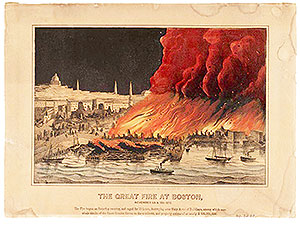
The main reason for the rapid spread of fire was lack of horsepower. Street activity came to a standstill because at that time all modes of transportation were horse driven. A plague, the Epizootic Plague, which at that time only affected horses, existed for weeks before and crippled almost all metropolitan horses, Somerville’s included.
Imagine! Everyone knows the recent affect Market Basket’s problem had on many in the city. Can you envision Somerville suddenly having no access to trucks, cars, cabs, buses or mail? Help came by railway from as far away as Worcester and Portsmouth, New Hampshire. Like many other towns, the entire Somerville Fire Department responded early on, working in the Winthrop Square section for over twenty hours, protecting that area as best they could.
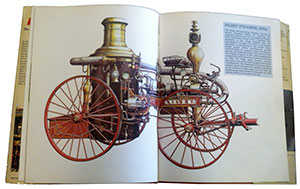
Many businesses owned by Somerville citizens were lost. Edward Revere Curtis of Somerville was the great grandson of Paul Revere. He was born on February 22, 1822, Washington’s birthday and the year that Boston became a city. He was a Common Council Member and a Somerville Alderman for years. His type-print foundry on Congress Street punctuated the end of the conflagration. It was the last building burned.
Gunpowder from the Charlestown Navy Yard and the Boston Army Base was used to make a fire block to the oncoming flames and stopped it long enough for extinguishment by the fire fighters. Help came from all around Boston. Because of the horse plague, the heavy fire engines had to be manually hauled up to 12 miles before putting a drop of water on the inferno. Scores of businesses were lost and hundreds of buildings destroyed.
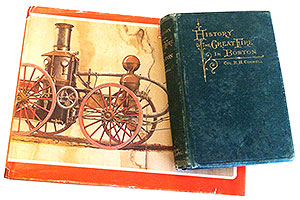
This event could not be forgotten, and Colonel Russell Conwell of Somerville made it so by capturing its memories and witnessed accounts in his 1873 book, History of the Great Fire in Boston.
Today, memories of these three terrible fires should make us all more safety conscious. So when you set your clocks back next week, check your smoke detectors. Who knows, you might even prevent a conflagration.















Reader Comments